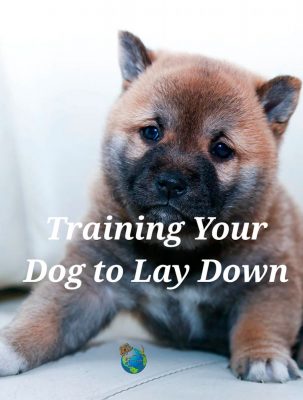Training Your Dog to Lay Down Vs Sitting Down
Our dog, Teddy, doesn’t have to be told to sit when he knows he is getting a treat. Most of the time, we just hold the treat and look at him and he knows what he is supposed to do. He sounds pretty well-trained, right? Well, there’s one specific problem. I’ve come to realize that Teddy doesn’t know the difference between sit and lay. When he knows he is getting a treat or his dinner he sits and if we pause for even one second he automatically lays down. If he is really rambunctious and he knows he is getting a treat then he automatically lays down. I believe he lays down so he is already in the lowest commanded position, which allows him to get his treat more quickly. It’s great that Teddy is trained in this sense but he should know the difference between basic commands: sit and lay.
Since Teddy often simultaneously sits and lays when he knows he is getting a treat or food, it shows that his intentions may not be on point. It appears that he isn’t listening to our command to obey us, but rather he is automatically doing what he thinks he needs to do in order to get his treat. It’s especially obvious when he does this when there is a lot of stimulation happening around him. He isn’t necessarily focusing on what’s going on. He is just laying so he can get a treat and move on to the next thing that is capturing his attention. Well, Teddy, it sounds like we have to refresh your training skills!
We did some research and tested out a few methods to see what would work best with Teddy. There’s a reason for the old saying, “you can’t teach an old dog new tricks.” We knew we would have to experiment with Teddy since he is already 9 years old. Dogs that are no longer in their puppy years may not be as receptive to training. Here are some tips we used to get our dog to understand the difference between sit and lay.
- If your dog isn’t into the treat (reward) you are using, then they won’t have motivation to obey your commands. Some dogs love any sort of treat but Teddy is picky. He loves cheese the most. Not all dog’s stomachs can handle cheese so choose a treat that’s right for your dog. For Teddy, we used really small pieces of all natural cheese. Small pieces allowed him to smell his reward without filling his belly with cheese.
- Training takes time and with older dogs it may take even longer. Older dogs are settled into their habits. Changing habits that have been accepted for many years may be more difficult to break. Be patient. Stay strong. Don’t let your dog’s whimpering, begging, or cute little face disrupt your training mode. Remember your goal! Only reward your dog when they have fully completed the command.
- Come up with a word for each command and stick with it. Changing or interchanging command terms can confuse your dog and make training take even longer. Match each training word with a command. When we want Teddy to sit we say sit and point our finger down to the ground. When we want to Teddy to lay down we say lay and touch the floor. Some use “stay” in place of “sit” and “down” in place of “lay”. Use what works for you and what your dog responds to best.
- At first, try to use a leash to initiate the correct positioning between sit and lay. If your dog goes down in lay position use the leash or harness to gentle re-position your dog into a sitting position. If your dog is sitting and won’t go into a lay position, try putting some gentle pressure on your dog’s back so they lay down. Some find success by gentle moving their dog’s front legs from a sitting position to a laying position. You can also try luring them to the ground by holding a treat low on the ground. Once your dog has shown signs of distinguishing sit and lay, you can remove the leash and reinforce behavior with rewards and repetition.
Steps to Train your Dog How to Lie Down
Start with a Desirable Treat
Sit, Reward, Repeat
Use Training Words and Actions
Use a Leash
Kimberly Alves
Published August 19th, 2015

Kim is the co-owner of DogLoverStore with her husband, John. She earned her BS in operations management at the University of Massachusetts Dartmouth. She enjoys walking in nature, gardening in the sun, eating sour candy, going on drives, yoga, and reading.



Leave a Reply